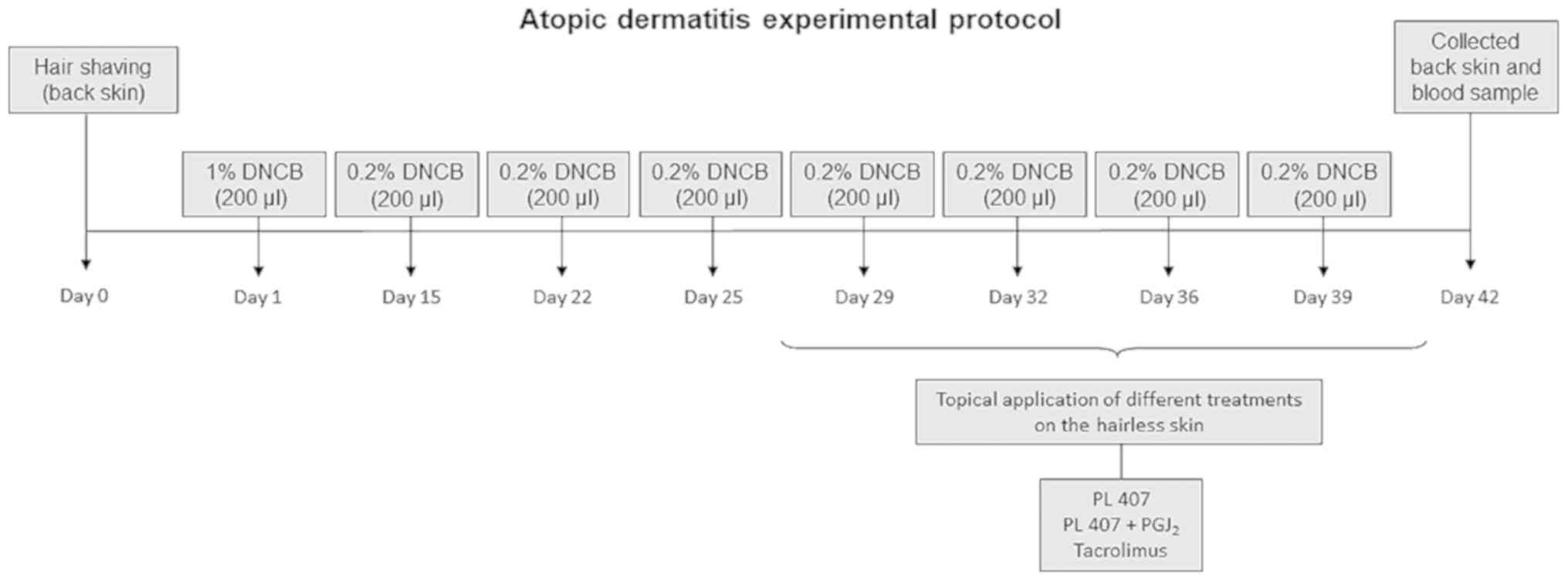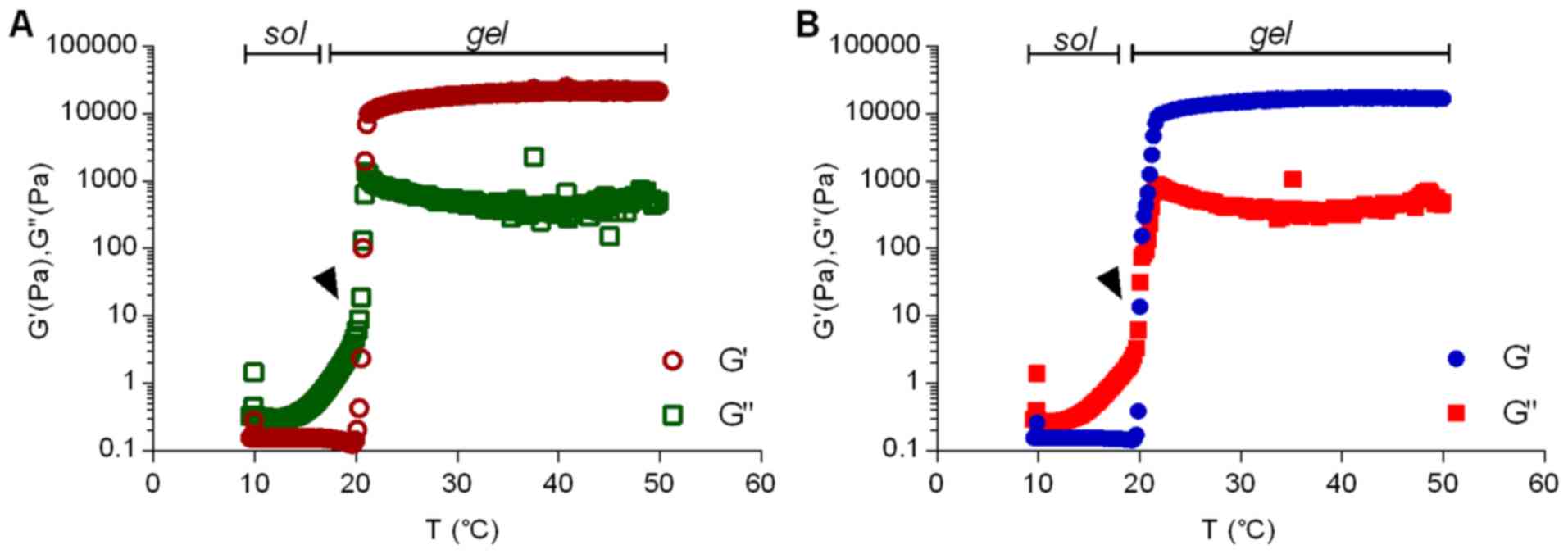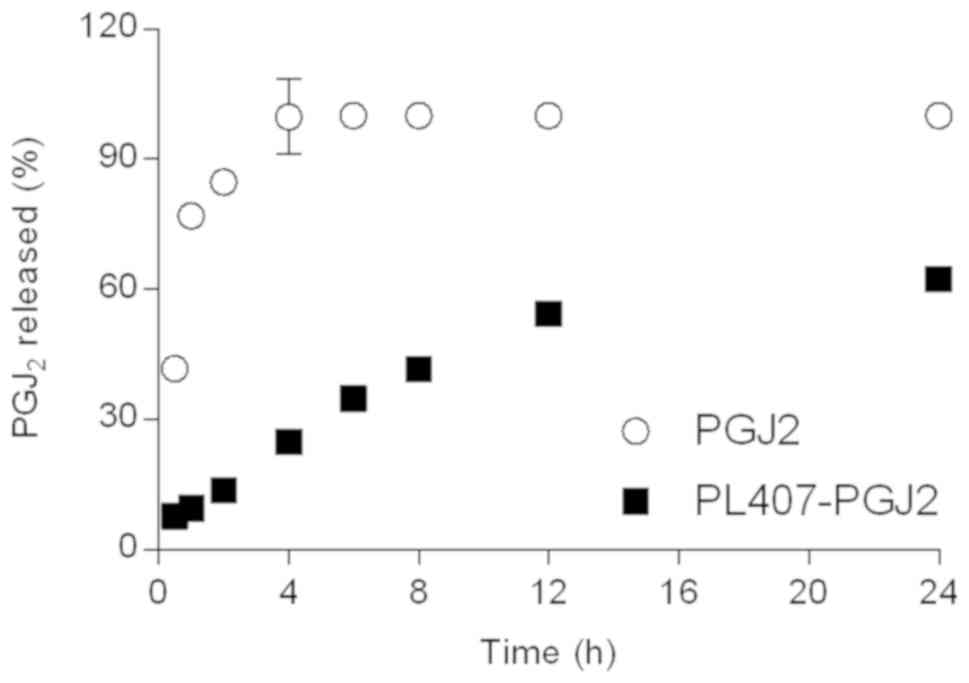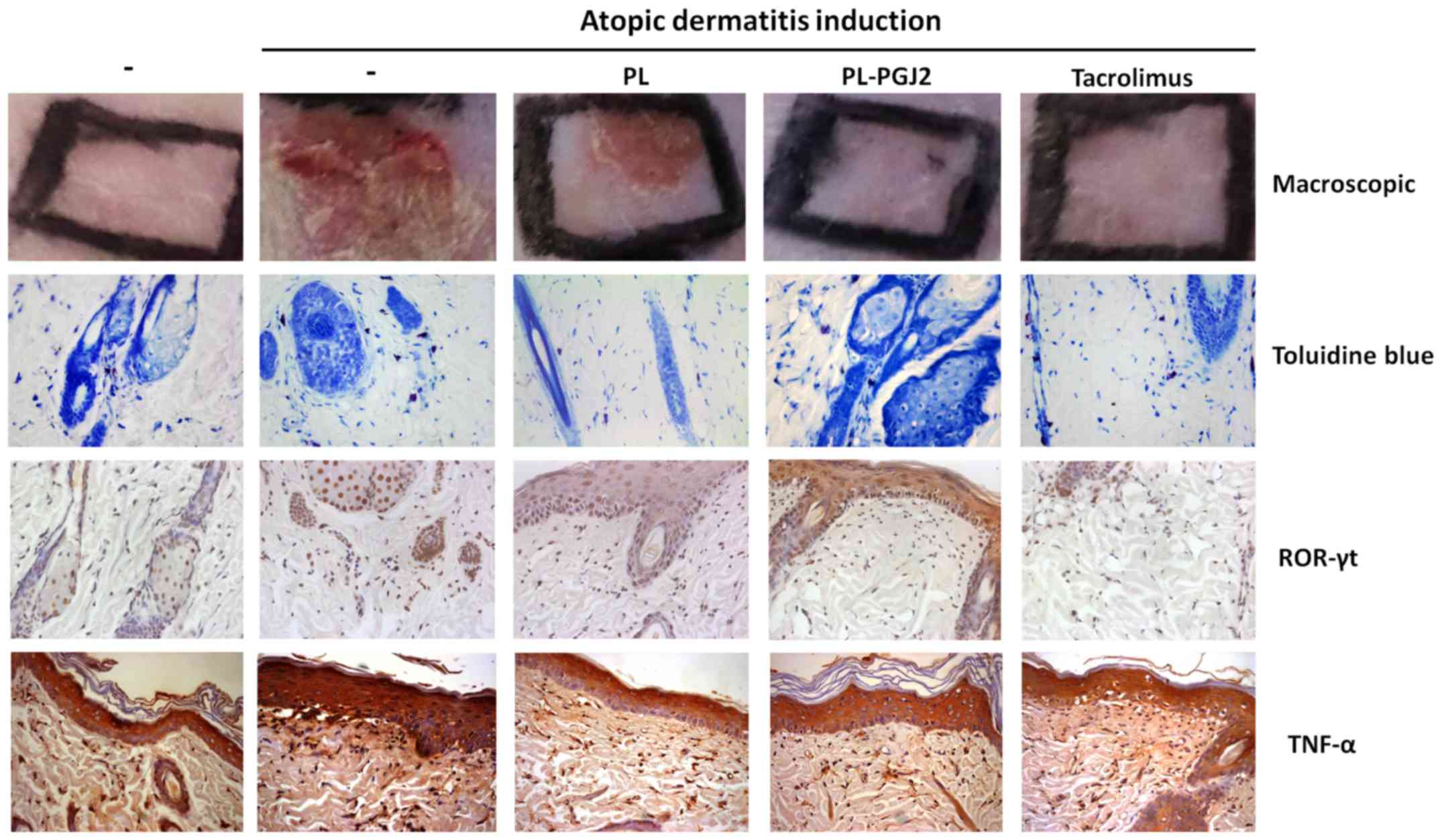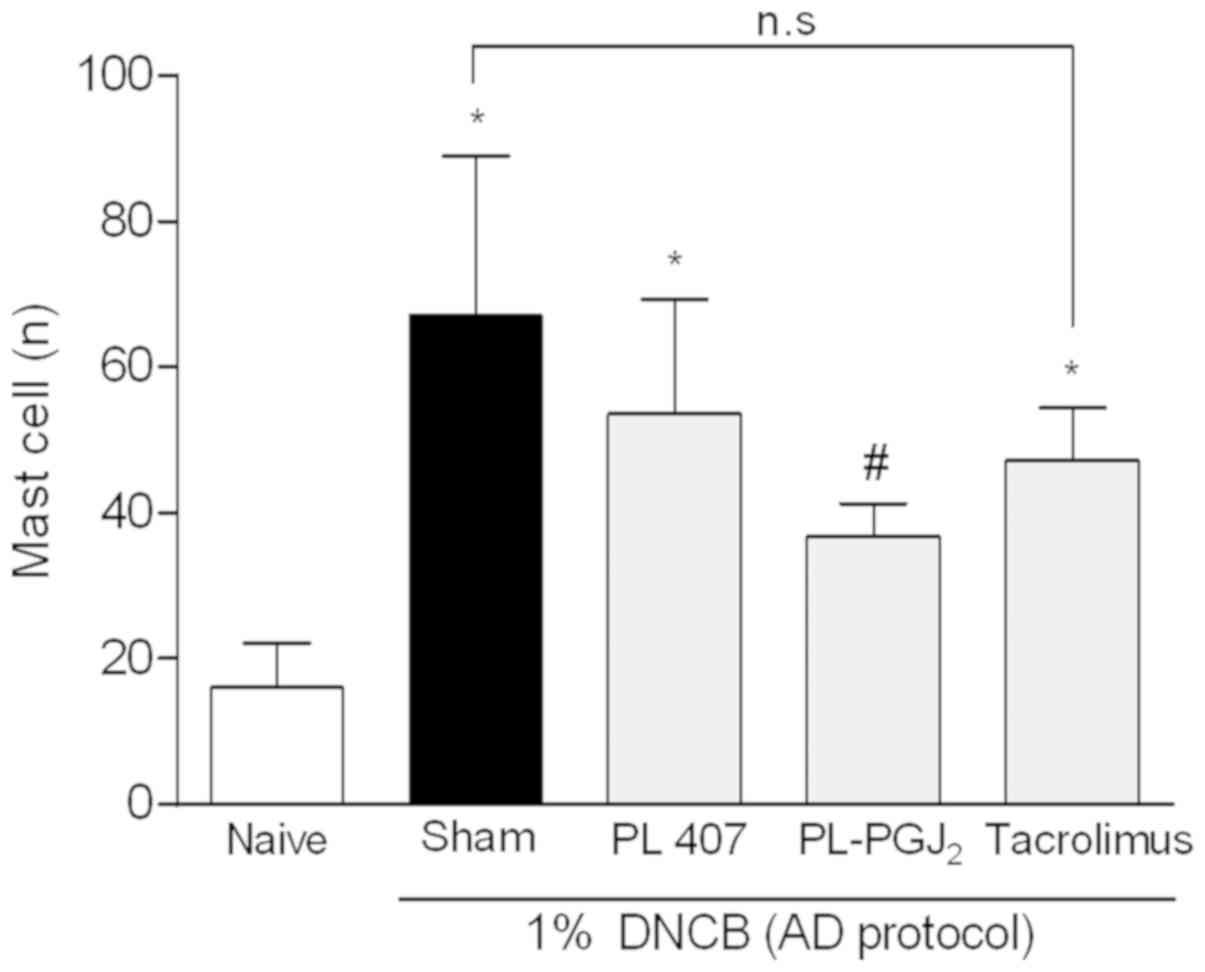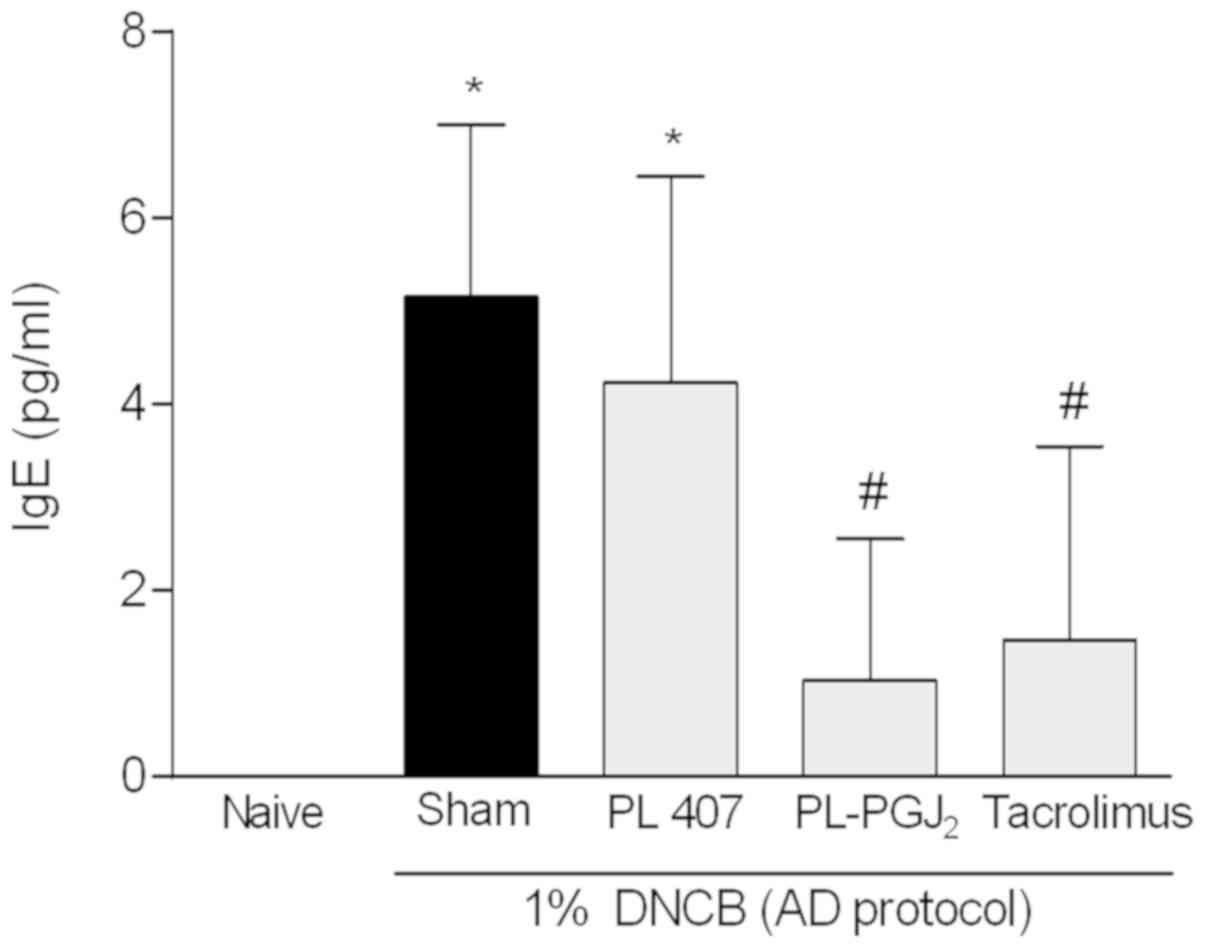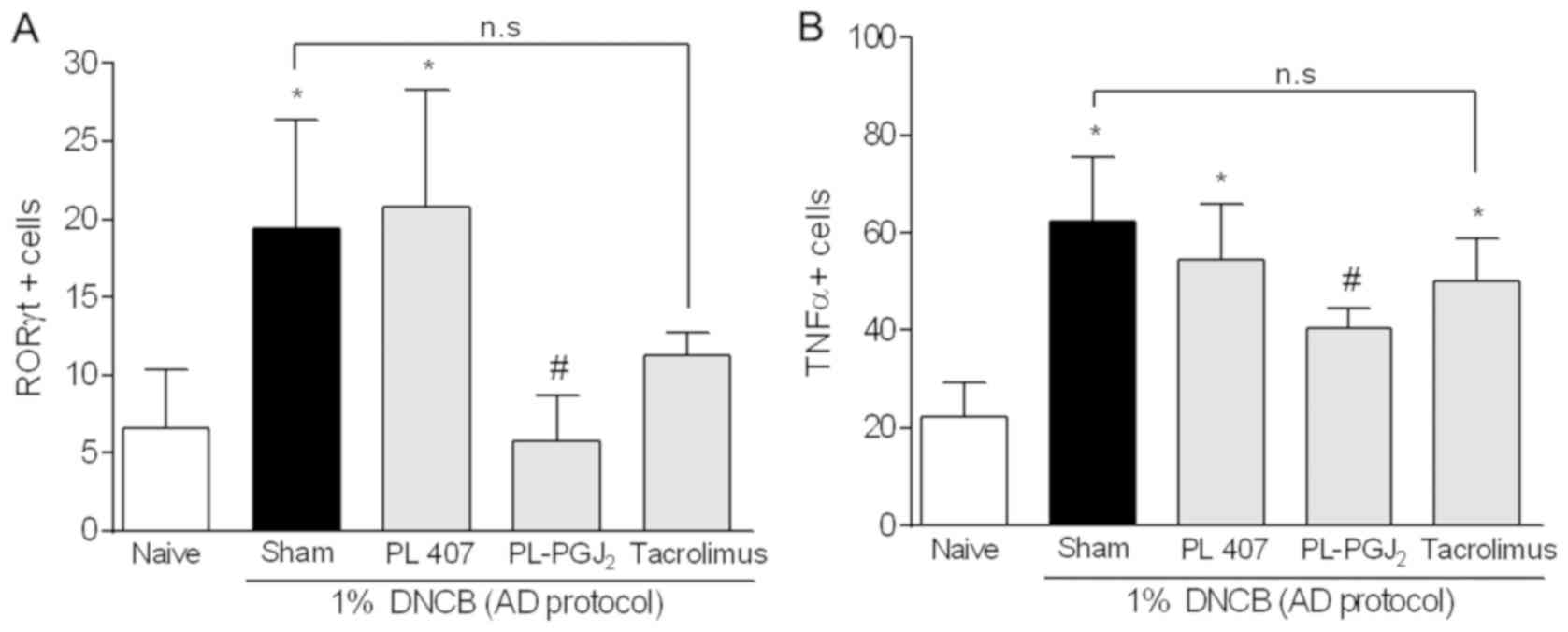|
1
|
Veiga SP: Epidemiology of atopic
dermatitis: A review. Allergy Asthma Proc. 33:227–234. 2012.
View Article : Google Scholar : PubMed/NCBI
|
|
2
|
De Benedetto A, Kubo A and Beck LA: Skin
barrier disruption: A requirement for allergen sensitization? J
Invest Dermatol. 132:949–963. 2012. View Article : Google Scholar : PubMed/NCBI
|
|
3
|
Berke R, Singh A and Guralnick M: Atopic
dermatitis: An overview. Am Fam Physician. 86:35–42.
2012.PubMed/NCBI
|
|
4
|
Dhar S, Seth J and Parikh D: Systemic
side-effects of topical corticosteroids. Indian J Dermatol.
59:460–464. 2014. View Article : Google Scholar : PubMed/NCBI
|
|
5
|
Margolis DJ, Abuabara K, Hoffstad OJ, Wan
J, Raimondo D and Bilker WB: Association between malignancy and
topical use of pimecrolimus. JAMA Dermatol. 151:594–599. 2015.
View Article : Google Scholar : PubMed/NCBI
|
|
6
|
Broeders JA, Ahmed Ali U and Fischer G:
Systematic review and meta-analysis of randomized clinical trials
(RCTs) comparing topical calcineurin inhibitors with topical
corticosteroids for atopic dermatitis: A 15-year experience. J Am
Acad Dermatol. 75:410–419. 2016. View Article : Google Scholar : PubMed/NCBI
|
|
7
|
Kikawa Y, Narumiya S, Fukushima M,
Wakatsuka H and Hayaishi O: 9-Deoxy-delta 9, delta
12–13,14-dihydroprostaglandin D2, a metabolite of prostaglandin D2
formed in human plasma. Proc Natl Acad Sci USA. 81:1317–1321. 1984.
View Article : Google Scholar : PubMed/NCBI
|
|
8
|
Straus DS and Glass CK: Cyclopentenone
prostaglandins: New insights on biological activities and cellular
targets. Med Res Rev. 21:185–210. 2001. View Article : Google Scholar : PubMed/NCBI
|
|
9
|
Napimoga MH, da Silva CA, Carregaro V,
Farnesi-de-Assunção TS, Duarte PM, de Melo NF and Fraceto LF:
Exogenous administration of 15d-PGJ2-loaded nanocapsules
inhibits bone resorption in a mouse periodontitis model. J Immunol.
189:1043–1052. 2012. View Article : Google Scholar : PubMed/NCBI
|
|
10
|
Macedo CG, Napimoga MH, Rocha-Neto LM,
Abdalla HB and Clemente-Napimoga JT: The role of endogenous opioid
peptides in the antinociceptive effect of
15-deoxyΔ12,14-prostaglandinJ2 in the temporomandibular joint.
Prostaglandins Leukot Essent Fatty Acids. 110:27–34. 2016.
View Article : Google Scholar : PubMed/NCBI
|
|
11
|
Shibata T, Takahashi K, Matsubara Y,
Inuzuka E, Nakashima F, Takahashi N, Kozai D, Mori Y and Uchida K:
Identification of a prostaglandin D2 metabolite as a neuritogenesis
enhancer targeting the TRPV1 ion channel. Sci Rep. 16:212612016.
View Article : Google Scholar
|
|
12
|
Kim SR, Choi HS, Seo HS, Ku JM, Hong SH,
Yoo HH, Shin YC and Ko SG: Oral administration of herbal mixture
extract inhibits 2,4-dinitrochlorobenzene-induced atopic dermatitis
in BALB/c mice. Mediators Inflamm. 2014:3194382014. View Article : Google Scholar : PubMed/NCBI
|
|
13
|
Surh YJ, Na HK, Park JM, Lee HN, Kim W,
Yoon IS and Kim DD:
15-Deoxy-Δ12,14-prostaglandin JZ, an
electrophilic lipid mediator of anti-inflammatory and pro-resolving
signaling. Biochem Pharmacol. 82:1335–1351. 2011. View Article : Google Scholar : PubMed/NCBI
|
|
14
|
Silva Quinteiro M, Henrique Napimoga M,
Gomes Macedo C, Furtado Freitas F, Balassini Abdalla H, Bonfante R
and Trindade Clemente-Napimoga J: 15-deoxy-Δ12,14-prostaglandin J2
reduces albumin-induced arthritis in temporomandibular joint of
rats. Eur J Pharmacol. 740:58–65. 2014. View Article : Google Scholar : PubMed/NCBI
|
|
15
|
Napimoga MH, Vieira SM, Dal-Secco D,
Freitas A, Souto FO, Mestriner FL, Alves-Filho JC, Grespan R, Kawai
T, Ferreira SH and Cunha FQ: Peroxisome proliferator-activated
receptor-gamma ligand, 15-deoxy-Delta12,14-prostaglandin J2,
reduces neutrophil migration via a nitric oxide pathway. J Immunol.
180:609–617. 2008. View Article : Google Scholar : PubMed/NCBI
|
|
16
|
Clemente-Napimoga JT, Moreira JA, Grillo
R, de Melo NF, Fraceto LF and Napimoga MH:
15d-PGJ2-loaded in nanocapsules enhance the
antinociceptive properties into rat temporomandibular
hypernociception. Life Sci. 90:944–949. 2012. View Article : Google Scholar : PubMed/NCBI
|
|
17
|
Alves C, de Melo N, Fraceto L, de Araújo D
and Napimoga M: Effects of 15d-PGJZ-loaded
poly(D,L-lactide-co-glycolide) nanocapsules on inflammation. Br J
Pharmacol. 162:623–632. 2011. View Article : Google Scholar : PubMed/NCBI
|
|
18
|
Gaumet M, Vargas A, Gurny R and Delie F:
Nanoparticles for drug delivery: The need for precision in
reporting particle size parameters. Eur J Pharm Biopharm. 69:1–9.
2008. View Article : Google Scholar : PubMed/NCBI
|
|
19
|
Trong LC, Djabourov M and Ponton A:
Mechanisms of micellization and rheology of PEO-PPO-PEO triblock
copolymers with various architectures. J Colloid Interface Sci.
328:278–287. 2008. View Article : Google Scholar : PubMed/NCBI
|
|
20
|
Oshiro A, da Silva DC, de Mello JC, Moraes
VW, Cavalcanti LP, Franco MK, Alkschbirs MI, Fraceto LF, Yokaichiya
F, Rodrigues T and de Araujo DR: Pluronics f-127/l-81 binary
hydrogels as drug-delivery systems: Influence of physicochemical
aspects on release kinetics and cytotoxicity. Langmuir.
30:13689–13698. 2014. View Article : Google Scholar : PubMed/NCBI
|
|
21
|
Akkari ACS, Papini JZB, Garcia GK, Franco
MKKD, Cavalcanti LP, Gasperini A, Alkschbirs MI, Yokaichyia F, de
Paula E, Tófoli GR and de Araujo DR: Poloxamer 407/188 binary
thermosensitive hydrogels as delivery systems for infiltrative
local anesthesia: Physico-chemical characterization and
pharmacological evaluation. Mater Sci Eng C Mater Biol Appl.
68:299–307. 2016. View Article : Google Scholar : PubMed/NCBI
|
|
22
|
Dumortier G, Grossiord JL, Agnely F and
Chaumeil JC: A review of poloxamer 407 pharmaceutical and
pharmacological characteristics. Pharm Res. 23:2709–2728. 2006.
View Article : Google Scholar : PubMed/NCBI
|
|
23
|
Santos Akkari AC, Ramos Campos EV, Keppler
AF, Fraceto LF, de Paula E, Tófoli GR and de Araujo DR:
Budesonide-hydroxypropyl-β-cyclodextrin inclusion complex in binary
poloxamer 407/403 system for ulcerative colitis treatment: A
physico-chemical study from micelles to hydrogels. Colloids Surf B
Biointerfaces. 138:138–147. 2016. View Article : Google Scholar : PubMed/NCBI
|
|
24
|
Mello JC, Moraes VW, Watashi CM, da Silva
DC, Cavalcanti LP, Franco MK, Yokaichiya F, de Araujo DR and
Rodrigues T: Enhancement of chlorpromazine antitumor activity by
Pluronics F127/L81 nanostructured system against human multidrug
resistant leukemia. Pharmacol Res. 111:102–112. 2016. View Article : Google Scholar : PubMed/NCBI
|
|
25
|
Nascimento MHM, Franco MKKD, Yokaichyia F,
de Paula E, Lombello CB and de Araujo DR: Hyaluronic acid in
Pluronic F-127/F-108 hydrogels for postoperative pain in
arthroplasties: Influence on physico-chemical properties and
structural requirements for sustained drug-release. Int J Biol
Macromol. 111:1245–1254. 2018. View Article : Google Scholar : PubMed/NCBI
|
|
26
|
Valero M and Dreiss CA: Modulating
Pluronics micellar rupture with cyclodextrins and drugs: Effect of
pH and temperature. J Phys Conf Ser. 549:0120102014. View Article : Google Scholar
|
|
27
|
Mills CM and Marks R: Side effects of
topical glucocorticoids. Curr Probl Dermatol. 21:122–131. 1993.
View Article : Google Scholar : PubMed/NCBI
|
|
28
|
FDA Post market Drug Safety, . http://www.fda.gov/Drugs/DrugSafety/PostmarketDrugSafetyInformationforPatientsandProviders/ucm107845.htm
|
|
29
|
Kohno S, Endo H, Hashimoto A, Hayashi I,
Murakami Y, Kitasato H, Kojima F, Kawai S and Kondo H: Inhibition
of skin sclerosis by 15deoxy delta12,14-prostaglandin J2 and
retrovirally transfected prostaglandin D synthase in a mouse model
of bleomycin-induced scleroderma. Biomed Pharmacother. 60:18–25.
2006. View Article : Google Scholar : PubMed/NCBI
|
|
30
|
Kon K, Ikejima K, Hirose M, Yoshikawa M,
Enomoto N, Kitamura T, Takei Y and Sato N: Pioglitazone prevents
early-phase hepatic fibrogenesis caused by carbon tetrachloride.
Biochem Biophys Res Commun. 291:55–61. 2002. View Article : Google Scholar : PubMed/NCBI
|
|
31
|
Ghosh AK, Bhattacharyya S, Lakos G, Chen
SJ, Mori Y and Varga J: Disruption of transforming growth factor
beta signaling and profibrotic responses in normal skin fibroblasts
by peroxisome proliferator-activated receptor gamma. Arthritis
Rheum. 50:1305–1318. 2004. View Article : Google Scholar : PubMed/NCBI
|
|
32
|
Mantel A, Newsome A, Thekkudan T, Frazier
R and Katdare M: The role of aldo-keto reductase 1C3
(AKR1C3)-mediated prostaglandin D2 (PGD2) metabolism in keloids.
Exp Dermatol. 25:38–43. 2016. View Article : Google Scholar : PubMed/NCBI
|
|
33
|
Arai I, Takano N, Hashimoto Y, Futaki N,
Sugimoto M, Takahashi N, Inoue T and Nakaike S: Prostanoid DP1
receptor agonist inhibits the pruritic activity in NC/Nga mice with
atopic dermatitis. Eur J Pharmacol. 505:229–235. 2004. View Article : Google Scholar : PubMed/NCBI
|
|
34
|
Farnesi-de-Assunção TS, Alves CF,
Carregaro V, de Oliveira JR, da Silva CA, Cheraim AB, Cunha FQ and
Napimoga MH: PPAR-γ agonists, mainly 15d-PGJ(2), reduce eosinophil
recruitment following allergen challenge. Cell Immunol. 273:23–29.
2012. View Article : Google Scholar : PubMed/NCBI
|
|
35
|
Fujimura Y, Tachibana H and Yamada K:
Peroxisome proliferator-activated receptor ligands negatively
regulate the expression of the high-affinity IgE receptor Fc
epsilon RI in human basophilic KU812 cells. Biochem Biophys Res
Commun. 297:193–201. 2002. View Article : Google Scholar : PubMed/NCBI
|
|
36
|
Miyazaki Y, Tachibana H and Yamada K:
Inhibitory effect of peroxisome proliferator-activated
receptor-gamma ligands on the expression of IgE heavy chain
germline transcripts in the human B cell line DND39. Biochem
Biophys Res Commun. 295:547–552. 2002. View Article : Google Scholar : PubMed/NCBI
|
|
37
|
Klotz L, Burgdorf S, Dani I, Saijo K,
Flossdorf J, Hucke S, Alferink J, Nowak N, Beyer M, Mayer G, et al:
The nuclear receptor PPAR gamma selectively inhibits Th17
differentiation in a T cell-intrinsic fashion and suppresses CNS
autoimmunity. J Exp Med. 206:2079–2089. 2009. View Article : Google Scholar : PubMed/NCBI
|
|
38
|
Vieira SM, Cunha TM, França RF, Pinto LG,
Talbot J, Turato WM, Lemos HP, Lima JB, Verri WA Jr, Almeida SC, et
al: Joint NOD2/RIPK2 signaling regulates IL-17 axis and contributes
to the development of experimental arthritis. J Immunol.
188:5116–5122. 2012. View Article : Google Scholar : PubMed/NCBI
|
|
39
|
Toda M, Leung DY, Molet S, Boguniewicz M,
Taha R, Christodoulopoulos P, Fukuda T, Elias JA and Hamid QA:
Polarized in vivo expression of IL-11 and IL-17 between acute and
chronic skin lesions. J Allergy Clin Immunol. 111:875–881. 2003.
View Article : Google Scholar : PubMed/NCBI
|
|
40
|
Koga C, Kabashima K, Shiraishi N,
Kobayashi M and Tokura Y: Possible pathogenic role of Th17 cells
for atopic dermatitis. J Invest Dermatol. 128:2625–2630. 2008.
View Article : Google Scholar : PubMed/NCBI
|
|
41
|
Di Cesare A, Di Meglio P and Nestle FO: A
role for Th17 cells in the immunopathogenesis of atopic dermatitis?
J Invest Dermatol. 128:2569–2571. 2008. View Article : Google Scholar : PubMed/NCBI
|
|
42
|
Theoharides TC, Alysandratos KD, Angelidou
A, Delivanis DA, Sismanopoulos N, Zhang B, Asadi S, Vasiadi M, Weng
Z, Miniati A and Kalogeromitros D: Mast cells and inflammation.
Biochim Biophys Acta. 1822:21–33. 2012. View Article : Google Scholar : PubMed/NCBI
|
|
43
|
Heo WI, Lee KE, Hong JY, Kim MN, Oh MS,
Kim YS, Kim KW, Kim KE and Sohn MH: The role of interleukin-17 in
mouse models of atopic dermatitis and contact dermatitis. Clin Exp
Dermatol. 40:665–671. 2015. View Article : Google Scholar : PubMed/NCBI
|
|
44
|
Batista DI, Perez L, Orfali RL, Zaniboni
MC, Samorano LP, Pereira NV, Sotto MN, Ishizaki AS, Oliveira LM,
Sato MN and Aoki V: Profile of skin barrier proteins (filaggrin,
claudins 1 and 4) and Th1/Th2/Th17 cytokines in adults with atopic
dermatitis. J Eur Acad Dermatol Venereol. 29:1091–1095. 2015.
View Article : Google Scholar : PubMed/NCBI
|
|
45
|
Coutinho DS, Anjos-Valotta EA, do
Nascimento CVMF, Pires ALA, Napimoga MH, Carvalho VF, Torres RC, E
Silva PMR and Martins MA: 15-Deoxy-delta-12,14-prostaglandin J2
inhibits lung inflammation and remodeling in distinct murine models
of asthma. Front Immunol. 8:7402017. View Article : Google Scholar : PubMed/NCBI
|















